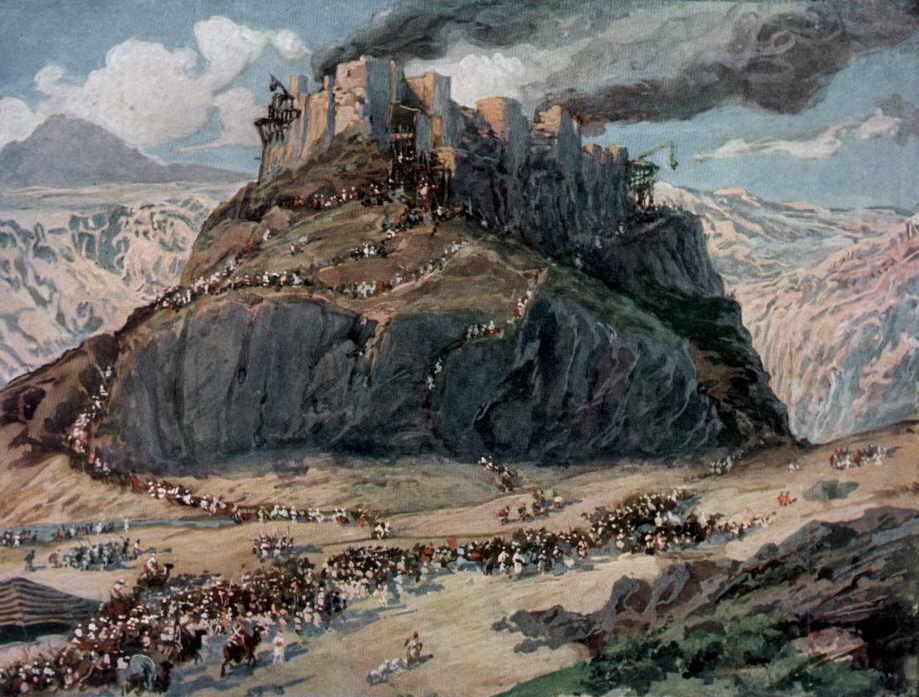While the beginning of the Exodus
was filled with hardship and tribulation for the tribes of Israel, it ends with
the Jews kicking butt and taking names. Even before they reach the Promised
Land and conquer it, Moses and his people are certainly no strangers to overwhelming
military victories.
The Conquest of Bashan
We hear of two of these such
victories in the Book of Numbers, are they are recounted to us in Deuteronomy.
In these battles, Moses and his people wage war against Og, King of Bashan, and
Shion, King of Heshbon. After asking to being refused permission to pass their
lands in peace, these two kings chose to meet the Israelites in battle and were
destroyed utterly, down to the last woman and child (Deuteronomy 2:26-3:4). It
seems logical to assume that such a devastating act of warfare would leave some
sort of archaeological trace. After all, the Kingdom of Bashan was said to
contain sixty cities.
Does such evidence exist, however?
The question is met with an overwhelming
chorus of “no”s. There isn’t even a historical trace of some of the smaller
cities the Jews encountered, much less evidence of a battle there. In fact, there isn’t even any
real archaeological evidence for the conquest of the land of Canaan, which is
certainly a far more important victory. What does this lack of evidence mean
for the credibility of these Biblical narratives? Some claim that it “demolishes”
the historical integrity of the Bible (1.) Others, however, argue that a lack of
evidence does not equate to proof of historical discrepancy (2).
In order to decide what this absence
of proof meant for myself, I decided to research similar occurrences outside of
Biblical history, where the results of my research were less likely to be
biased. All in all, I was surprised by how many major cities humans have
managed to misplace over the past few
millennia.
For instance, Machu Picchu, a large
Incan city built on a mountaintop in Peru, remained undiscovered by modern men
until 1911, when a Yale professor came across the ruins during a hike (3).
Machu Picchu
One
of the ancient world’s oldest and most well-established cities, Mohenjo-daro, was founded nearly five millennia ago, flourished for thousands of years, and was
only rediscovered in 1921 in modern-day Pakistan (4). Even the city of Troy, on
which Homer centered his narrative about the birth of Western Civilization, was
lost for so long that it was speculated to be only a legend. It wasn’t until
1871 that a city was discovered matching the classical description of Troy, and
historians today still aren’t sure whether or not the ruins they discovered are
indeed the bones of the great lost city (5).
The Ruins of Ancient Troy
In summation, though there is no
hard archaeological evidence for the Hebrew people’s conquest of scores of
ancient cities, there is still no reason to toss out the validity of Biblical
history based on this alone. Especially in a region as broad and harsh as the
deserts of the Middle East, it isn’t entirely impossible to lose all trace of
such cities.
(2)
http://www.biblearchaeology.org/post/2011/04/14/New-Light-on-the-Forgotten-Conquest.aspx#Article
(5)
http://listverse.com/2011/09/09/top-10-lost-cities/



No comments:
Post a Comment